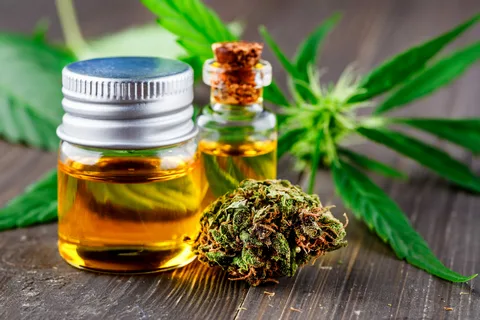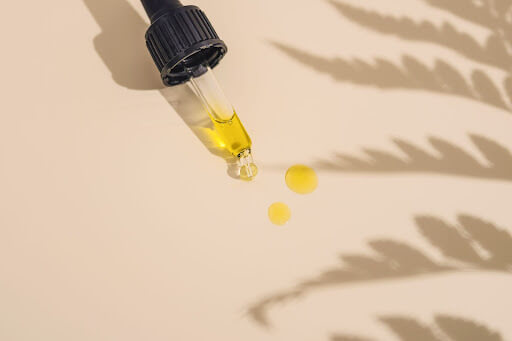Patients ask surgeons about CBD more often than ever, especially around cosmetic procedures and minor day-case operations. They want to know whether CBD will calm pre-op nerves, reduce swelling, or help them sleep during the early days of recovery. It is a fair question. Your body is already juggling anaesthesia, pain medicine, and stress. Add CBD and the picture can get complicated fast.
Many people discover CBD through oils, gummies, softgels, or topicals. Others notice the rise of popular CBD flowers on forums and TikTok, where users talk about aroma, terpene notes, and how they unwind after a long day. The format matters because how you take CBD changes how quickly it acts, how hard it is to dose, and how likely it is to interact with your medicines. Smell and taste can be part of the draw, but dose and timing are what matter before surgery. Keep that front and centre.
Lists that claim to rank the best CBD in the UK are everywhere. They can be entertaining, but they are not a clinical yardstick. From a surgical perspective, the priority is simple: products that show batch-specific lab reports, keep THC within legal limits, and avoid medical claims unless they hold a proper licence. That is a different lens to shopping lists and influencer roundups. It is deliberately cautious.
What CBD is (and isn’t) in the UK
CBD sold as a food or supplement is regulated differently from licensed medicines. UK regulators treat CBD in foods as a “novel food,” which means products need authorisation and must be marketed without medicinal claims. That is why you will see careful wording on bottles and websites. It is not just legalese. It exists so consumers and clinicians can tell the difference between wellness products and prescribed cannabis-based medicines. The FSA CBD guidance currently cites a provisional adult daily intake of 10 mg for healthy adults and advises people who are pregnant, breastfeeding, or on prescription medicines to avoid CBD.
When CBD is used as a medicine, the bar is higher. Doctors work with cannabis-based products for medicinal use in specific cases and under specialist supervision. That is very different from buying a peppermint-tasting oil at a high-street shop. If your situation is complex, your surgical team may refer to your GP or a specialist so everyone is aligned. Clarity helps. Guesswork does not.
Pre-op and Post-op: Safety Questions That Matter
Tell your surgeon and anaesthetist exactly what you use, how much, and how often. Do this even if it is a lavender-scented balm or a nightly capsule. Transparency helps them plan anaesthesia and pain control safely. Some cannabinoids can affect enzymes that process common drugs, including opioids, benzodiazepines, and blood thinners. Evidence is still building, but that is precisely why disclosure is essential. No surprises on surgery day.
Ask two practical questions at your pre-op visit. First, should you pause CBD and, if so, when. Second, which forms (if any) could be acceptable during recovery. Many clinicians prefer that patients stop ingestible CBD ahead of surgery because it is harder to predict interactions compared with a small, local topical. That is a general tendency, not a universal rule. Your plan should be personalised.
Research also points to potential cardiovascular and sedation considerations around cannabinoids. These effects are not guaranteed, but they are relevant for anaesthesia teams. A recent perioperative cannabis review discusses possible interactions with anaesthetic agents and cardiovascular outcomes, which is one reason clinicians emphasise full disclosure and careful monitoring.
Choosing and Using CBD Products Responsibly
If your team agrees that CBD could fit into your recovery, start with important checks. Find a recent certificate of analysis. It should match the batch number on your bottle or jar. Confirm cannabinoid content. Check that THC stays within UK legal limits. Scan for contaminants such as heavy metals and solvents. It is dull admin, but it lowers risk. Small steps matter.
Route of use is the next decision. Ingestibles travel through your whole system. They may interact more widely with medicines you receive in theatre or on the ward. Topicals on intact skin are less likely to do that. Keep any product away from fresh incisions or sensitive areas. Wait until your clinician says the wound is sealed and stable. Less is more. Start small, observe, and stop if anything feels off.
Timing is the third lever. Recovery often follows a pattern. Pain and swelling peak in the first 48–72 hours. Sleep is disrupted. Then things calm. If CBD is permitted in your plan, introduce it after your team has reviewed your early pain control and antibiotics. Write down what you take and when. A simple notebook with times and doses beats guesswork when you are tired and healing.
Hydration and nutrition sound basic, yet they matter. A bowl of salted broth tastes good when your mouth feels dry. It helps you keep tablets down. So does a plain yoghurt or a soft poached egg once you can eat normally. CBD will not fix dehydration or a missed meal. The fundamentals come first.
Red flags and when to stop
Stop CBD and contact your team if you notice rash, dizziness, palpitations, unusual bruising, or a new headache that does not settle with approved medication. Do the same if you feel unusually sedated or “foggy” after combining CBD with prescribed pain relief. Even if CBD felt fine before surgery, your body is different while healing. That is normal. It is why your plan should be temporary and reviewed.
Finally, be wary of marketing shortcuts. Words like “surgical-grade” or “doctor-approved” on a retail product do not replace proper licensing or clinical evidence. If a product claims to treat pain, anxiety, or inflammation as if it were a medicine, that crosses a regulatory line. Your safest path is to keep decisions inside the triangle of surgeon, anaesthetist, and GP. Keep notes. Ask simple questions. Make each change small.
Bottom line
CBD can sit alongside cosmetic or other surgical care for some patients, but only with clear disclosure, product quality checks, and a plan agreed with your clinical team. Think of it as one tool among many, not a shortcut. Set expectations, pause when advised, and reintroduce carefully if your team says it is appropriate. Safe recovery is the goal. Every choice should serve that.











